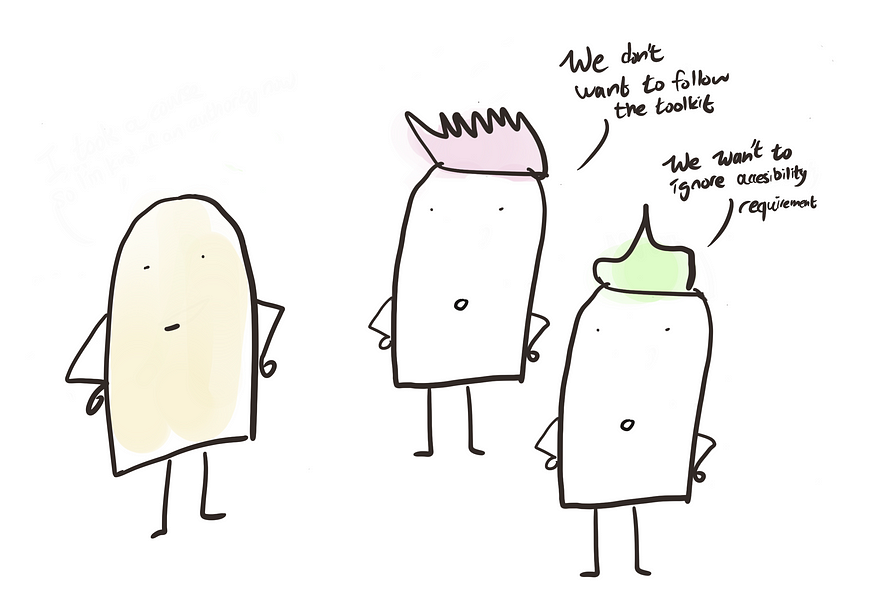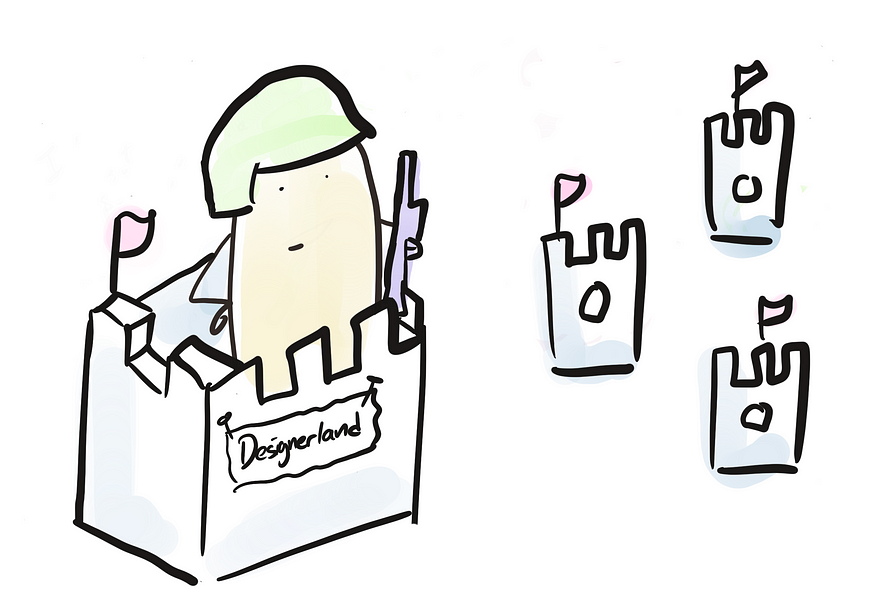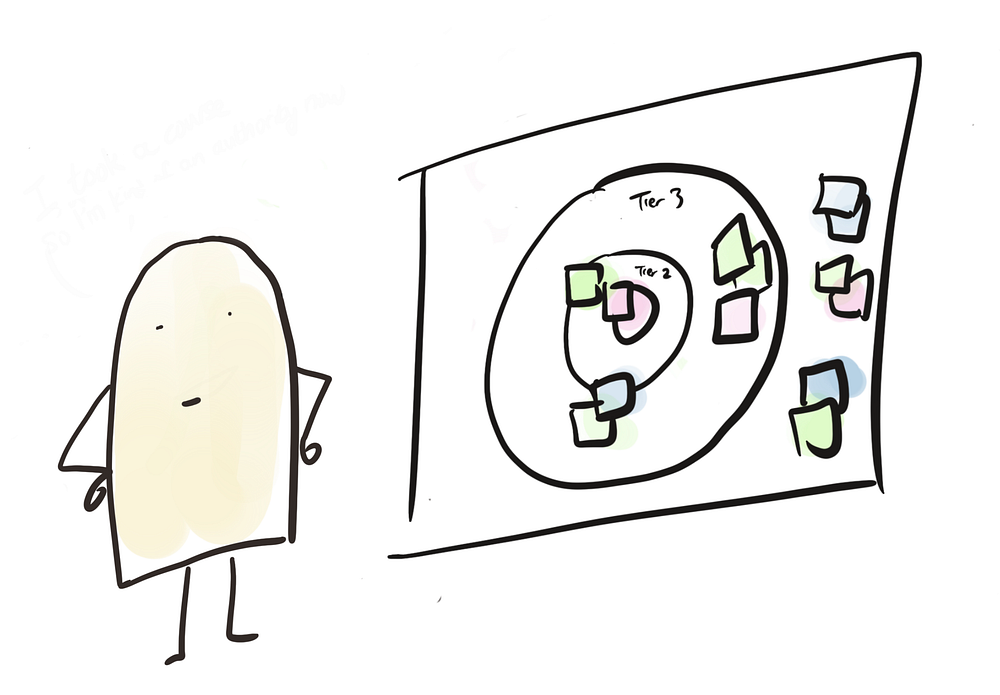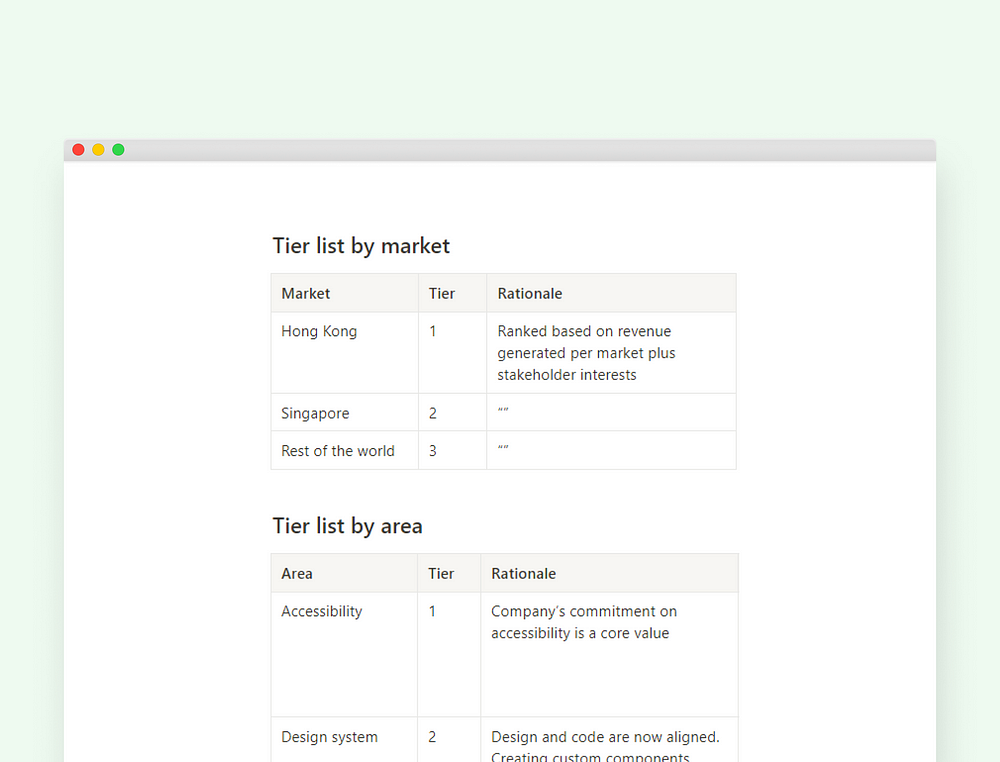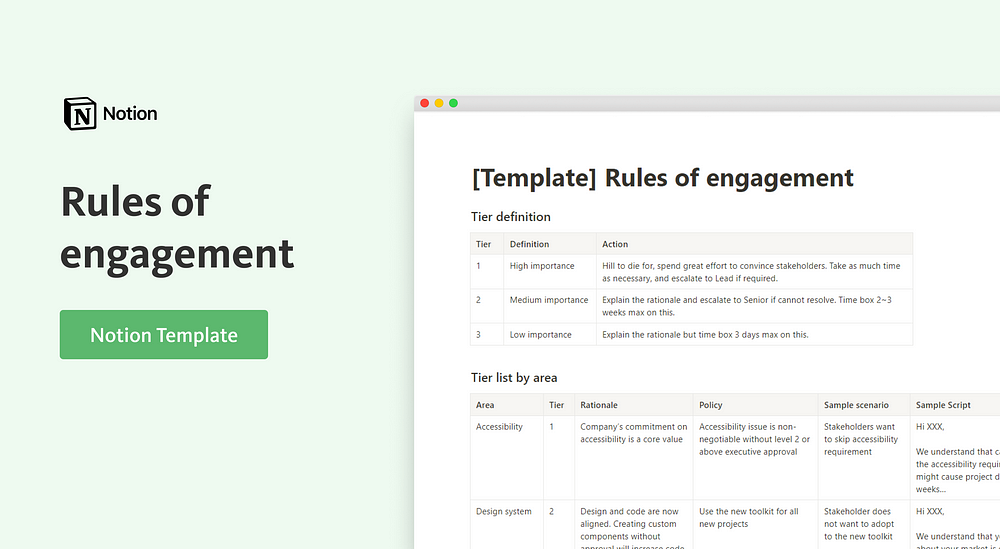How to choose which battle to fight as a designer
Hello Reader, Today I want to talk about a struggle that I have had for a long time: learning how to choose which battle to fight as a designer. How to choose which battle to fight as a designerAs designers, we have been told we should “learn to choose which battle to fight” because we can’t win every argument. However, no one has taught us how to choose which battle to fight.
When I first became a design lead managing a group of designers, I found myself in meetings all day with designers trying to figure out how we should react in different situations. Team A did not follow the design system, team B insisted to push for a design that hurts the UX and team C decided that accessibility does not matter. Every scenario seems unique and we have to come up with a response every time. Without a framework, we felt like we are constantly fighting fires. We became reactive. We wasted mental energy figuring out how we should react. It was unsustainable. Eventually, I found a way. In this article, I will share a framework that helped me solve this problem and gain back my sanity — I call it the “Rules of Engagement” framework, it helps you clarify:
Let’s get right into it. Rules of engagementIn military speak, “Rules of Engagement” refers to official orders that describe when and how a soldier should engage enemies in a combat situation. The idea is to proactively think ahead of how you would react when different situations occur, instead of passively waiting for it to happen and then figuring out what to do. This way, you avoid knee-jerk reactions and can focus your limited mental capability on truly unique matters.
When to engage & effort to spendImagine your design team as a country under siege by design-related issues. You have limited resources, so you have to prioritize which cities to defend using a tiering system. For example:
Applying to design, this would mean figuring out “How do we categorize our issues and How should we respond”? Your tier list might look something like this: The beauty of this framework is twofold:
How to implement this framework
You are going to have disagreements and debates on which area is important, but that’s okay! It is much better to have an internal fight now than wait until the issue occurs and scramble to find the right response. Multiple tier listYou might find it beneficial to have multiple tier lists depending on your situation. In my previous role, the company was organized around international markets. The strategic importance market — the one that makes the most revenue — gets the most attention from stakeholders, so it made sense for us to consider this in prioritizing our responses. I had two tier lists, one for the market and another for the nature of the issue.
When an issue arises, I will follow this procedure:
Then I simply respond according to the pre-defined action. How to engage effectivelyFrom cold call scripts to product FAQs, the most successful teams would actively seek out repeatable solutions and systemize them. From my experience, the most effective way to help the design team engage with stakeholders is to provide them with the following:
Don’t have a policy yet? Just start making one up now. I am serious. “Policy” is just a fancy name for how your team makes decisions based on grounded rationale. Once you have referred to your rationales enough times, it will become a de facto policy. You just have to start writing it down now so others can refer to it later.
I have included an example of what your rules of engagement document might look like. You can visit this Notion page and create a template for yourself. Now whenever an issue arises, you can look at the table to identify how important it is, how much effort to put into it, and know exactly what to say. Benefits of this frameworkTo recap, the “Rules of engagement” framework benefits the design team in the following ways:
I hope you give this framework a try. Talk soon! — Tim p.s. Have some topics you want me to talk about? Let me know! I read every reply. |
113 Cherry St #92768, Seattle, WA, 98104-2205, Seattle, WA,, WA 98104-2205 |
Hi! I'm Tim.
Get my newsletter to learn the softskills of UX and grow your design career.
Hello Reader, Today I want to talk about how to be brutally honest with ourselves on how much design influences we actually have in our organization. You can read this article online here If we want to continue to improve the UX maturity of our organization, we first need to be clear on where we are on the totem pool, so we can plan strategically on how to increase our influence. The problem is, we designers are often delusional. We confuse how we think the world works versus how the world...
Hello Reader, The other day, I was running an origami workshop to teach people how to fold an origami Siu Mai (燒賣), a form of Dim Sum. Most of the guests were respectful. However, there was one lady that was struggling and was asking for my help with an accompanying “the beckoning finger” hand gesture signaling me to go over to her. “the beckoning finger” I was FURIOUS! This gesture is only used to beckon dogs in my country, so I thought this lady was being extremely rude. I assumed she is a...
What does “Users need this feature” mean? Welcome to Food for Thoughts Thursday, a new experimental series where I send a short piece of content in addition to my monthly long-form content. If this is well received, I will continue to do more. Let me know your thoughts! Be vigilant when a stakeholder says “Users need this feature”. It can be interpreted in a lot of ways, a little riddle: Which of the following is true? Users actually need this feature Users say they need this but they don’t...
